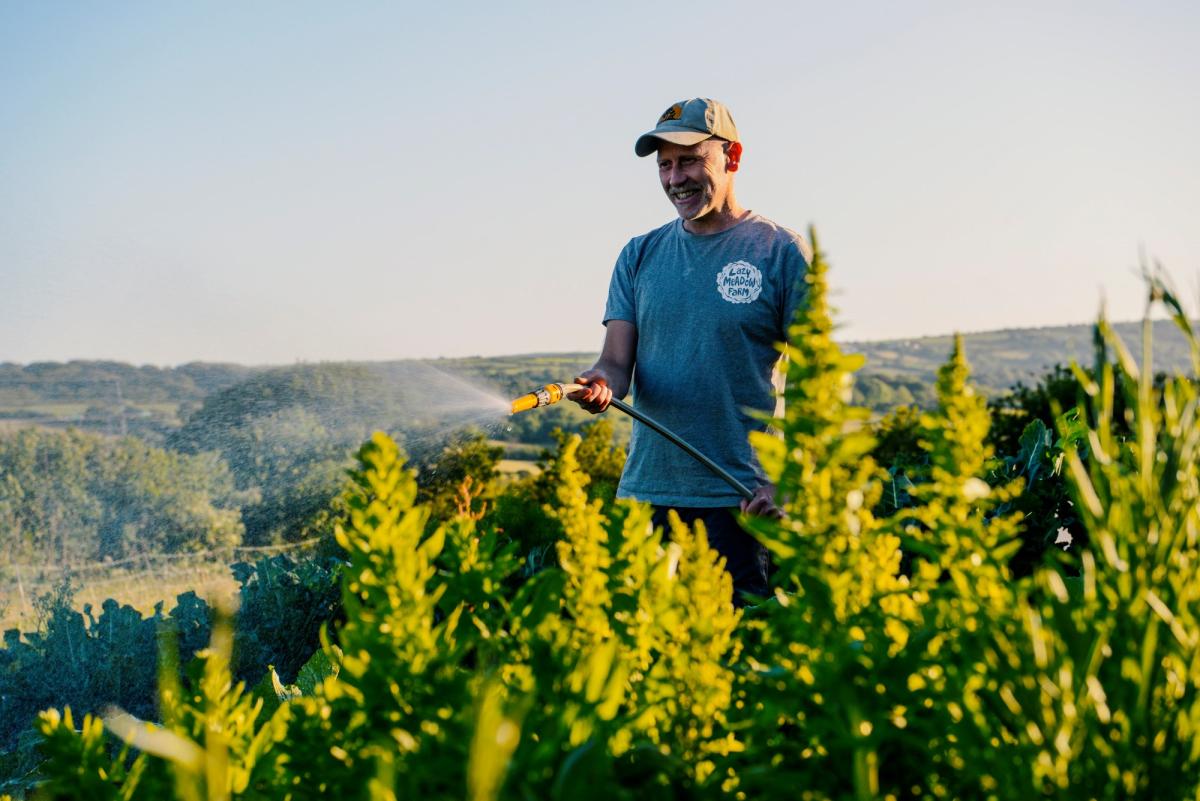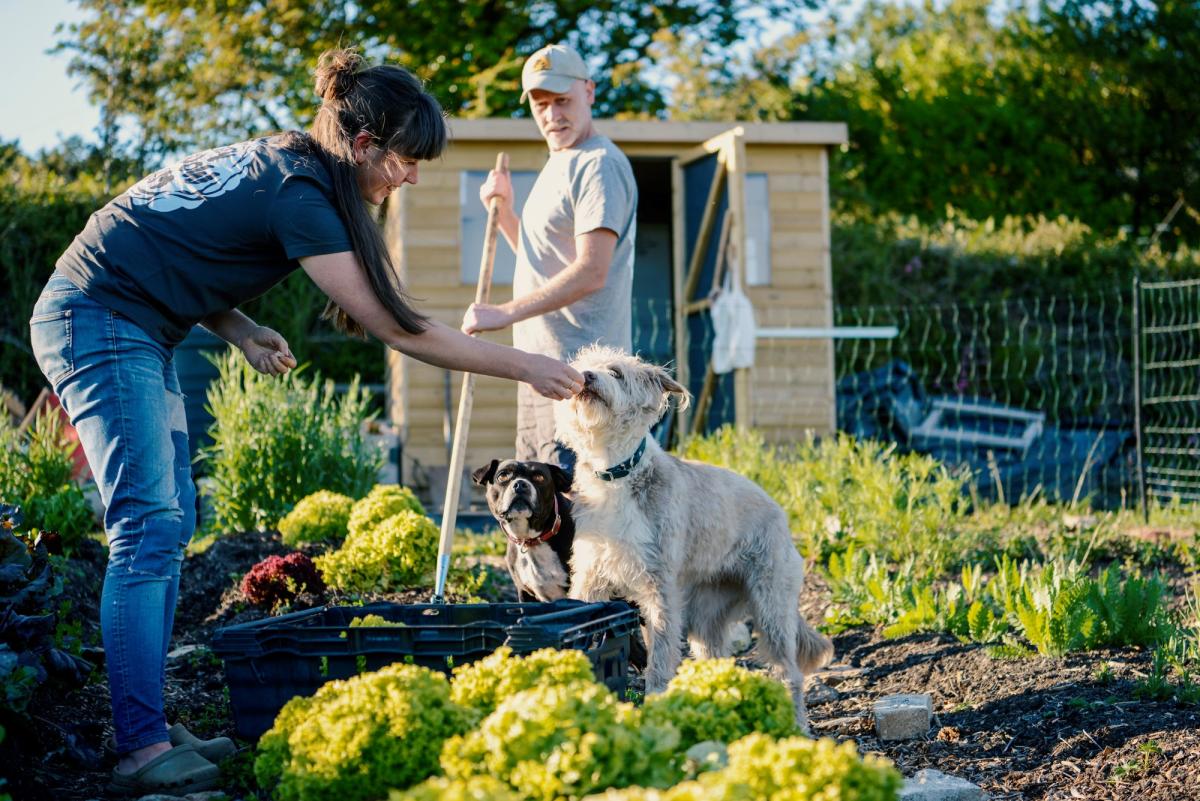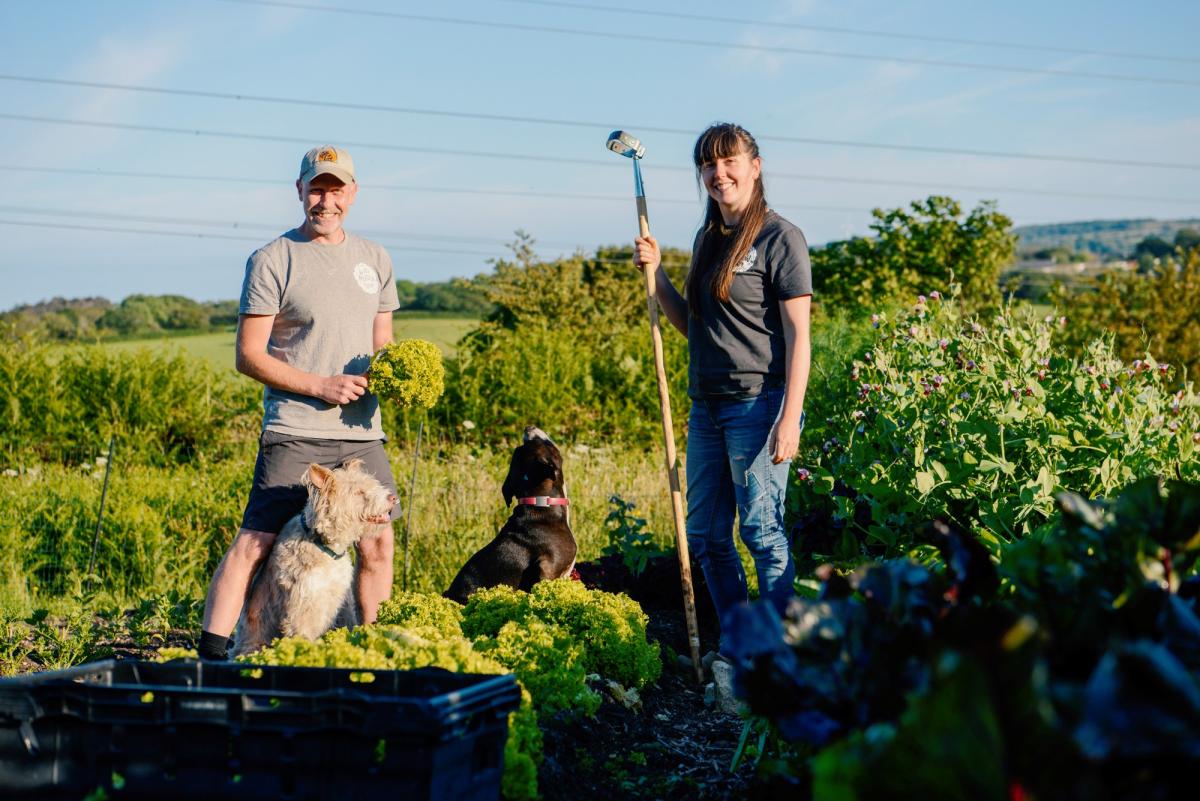Our Community Network Coordinator Rich Hardy gives his Top Tips for Veganic Growing
Allotments are wonderful places.
They’re fantastic spaces to grow fruit and vegetables, but they also help us grow as people – primarily through experiencing a sense of community and the sharing of knowledge that comes with that.
But it’s not always straightforward when you want to follow your ethics and grow in a way that does not cause harm to others. In all likelihood, you will be in a minority if you want to grow the vegan way! But don’t be afraid, and get ready to be a pioneer. By applying the following tips, you might just raise a few eyebrows with your allotment neighbours, but in a positive way. And if my experience is anything to go by, you’ll probably inspire some of them to ditch the slug pellets and embrace a kinder way to grow.

Grow veganic! (vegan + organic)
There are lots of growing guides out there for the novice gardener, but few offer up a vegan approach to gardening. Instead, they’ll deliver a sermon that you’ll need to apply animal by-products or a toxic cocktail of chemicals to your ground if you’ve any chance of growing that prized carrot. Before you sow even one seed, we recommend you visit the gardening pages of the Vegan Organic Network, who’ll get you growing incredible edibles, and in harmony with your wildlife neighbours.
Short on time
If you lead a fast-paced lifestyle or face personal challenges in your life that make gardening physically difficult, then maybe growing perennial fruit and veg could be the right thing for you. Sow or plant them once, and they’ll come back year after year, with minimum effort. Asparagus, artichokes, rhubarb, strawberries and kale can all be grown this way.
No-dig
Try not to dig the ground. Only use a spade or shovel to spread compost over your growing beds before planting out young vegetables or sowing seed. Digging the soil not only kills incredibly useful invertebrates, but breaks up the structure too, making it more difficult for plants to get established and thrive. A no-dig allotment could help look after your soil, and your back!

Grow as much as you can in module trays
Growing in module trays rather than direct seeding to your beds will probably bring more success. You can raise the plants at home (on a windowsill, under grow lights or in a greenhouse, if you have one) and keep a much closer eye on them. Out of sight often means out of mind, and inevitably young plants suffer in allotments when you’re not able to check on them regularly. Only once they’re looking healthy and strong should you plant them out.
Make friends with a local tree surgeon
Keep weeds at bay and conserve water, by applying mulches around your growing area. A generous covering of wood chip to paths prevents weeds breaking through. As the wood chip breaks down, it also helps feed the soil, which your crops can then benefit from. Tree surgeons are often happy to offload it for free, and some already have agreements with local allotments – so if it’s available, be sure to use it!
Invest in some covers
For best results, invest in some covers. Get fleece to cover plants, keep them warm and help them through the ups and downs of the British weather – particularly in the springtime. Also, get some mesh netting. This will help protect your crops from some of the more challenging insects – usually the smallest ones with the most voracious appetites. That said, be sure to encourage as much wildlife to your site as possible, as they bring positive benefits to your site too! We set aside sacrificial crops so they can all get their fill!
Don’t let weeds get bigger than two leaves
Use a hoe to strike through the first sign of weeds. Don’t let them get any bigger than having two leaves, or they’ll get established and take energy away from your crop. Hoe on a sunny day and you can leave them on top of your growing bed to fizzle out in the sun.
Compost, compost, compost
Whether you make your own or buy in, compost is essential to growing vegetables without animal inputs. Think of growing as feeding the soil, not the plant. Watch out, though, as it’s not all vegan-friendly! Our in-house growers recommend Fertile Fibre, which is trademarked by The Vegan Society and is also peat free.

Grow salad
Salad is fast and easy to grow – and can be grown pretty much all year round. Cut and it will often come back again for one or two more flourishes. Having a reliable crop growing in your allotment will help you, and those you share your allotment with, stay positive and engaged with growing.
Rich Hardy is a vegan farmer based in Cornwall. He runs Lazy Meadow Vegan Farm with his partner and co-founder, Pru Elliott. Operating as a Community Supported Agriculture (CSA) market garden, they deliver seasonal veganic veg boxes every week from May to October within just a few miles of their one-acre site.
Recent converts to farming, they started their growing journey on allotments and have the following tips and guidance to share for those just starting out with growing fruit and veg on allotments for the first time.
Grow Green
We’re celebrating National Allotments Week as part of our Grow Green campaign. Transformation of our food system must happen at every level, from the carrots in your back garden to the farmers that grow our beans and cabbages, and the national and international policies which influence how all our food is produced. Through the Grow Green campaign, The Vegan Society advocates for a planet friendly, vegan farming system. We push for better farming policies to support those who grow plant proteins and vegetables and share knowledge on the transition to animal free farming. Find out more on our Grow Green campaign pages.
The views expressed by our bloggers are not necessarily the views of The Vegan Society.

